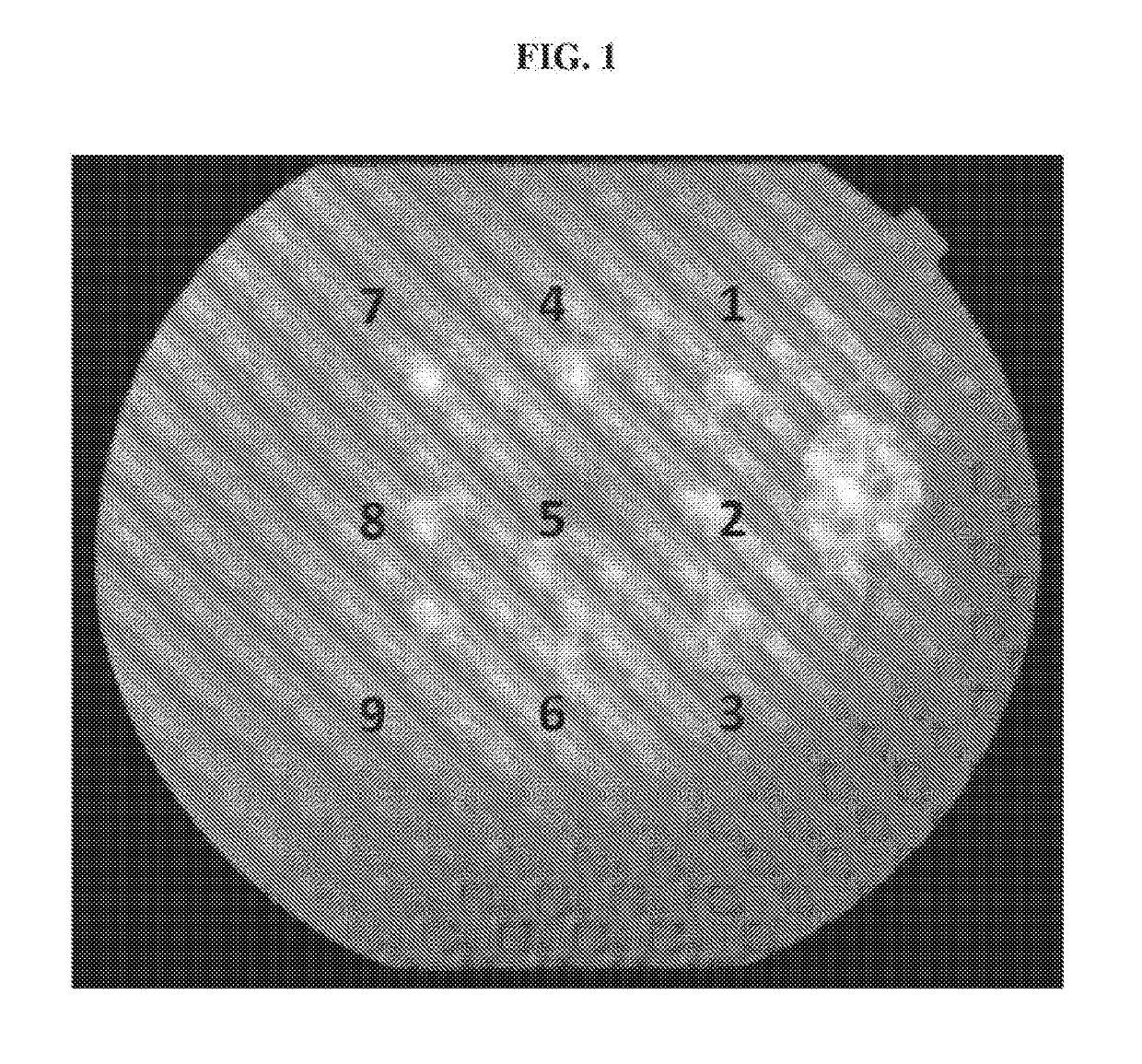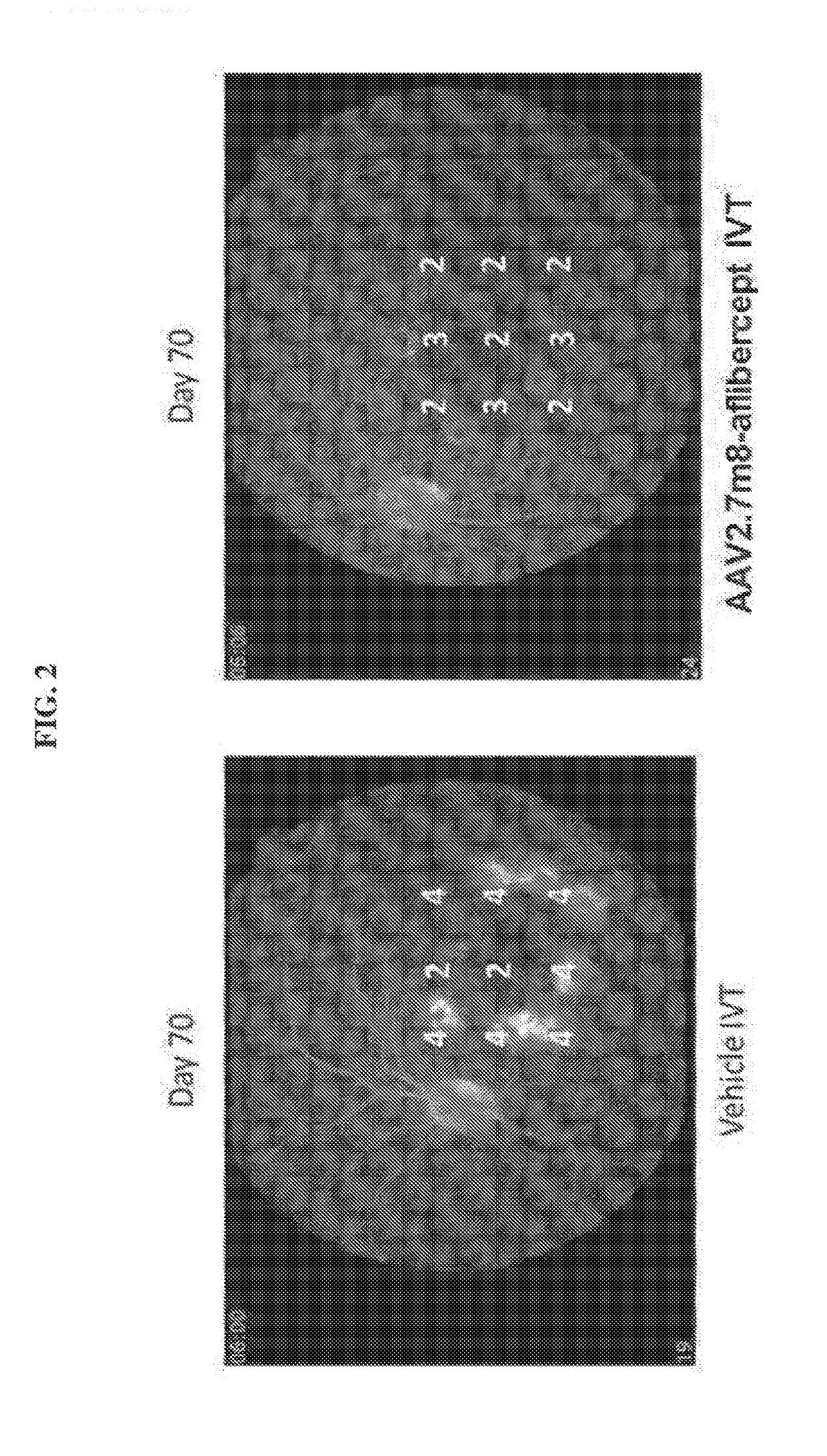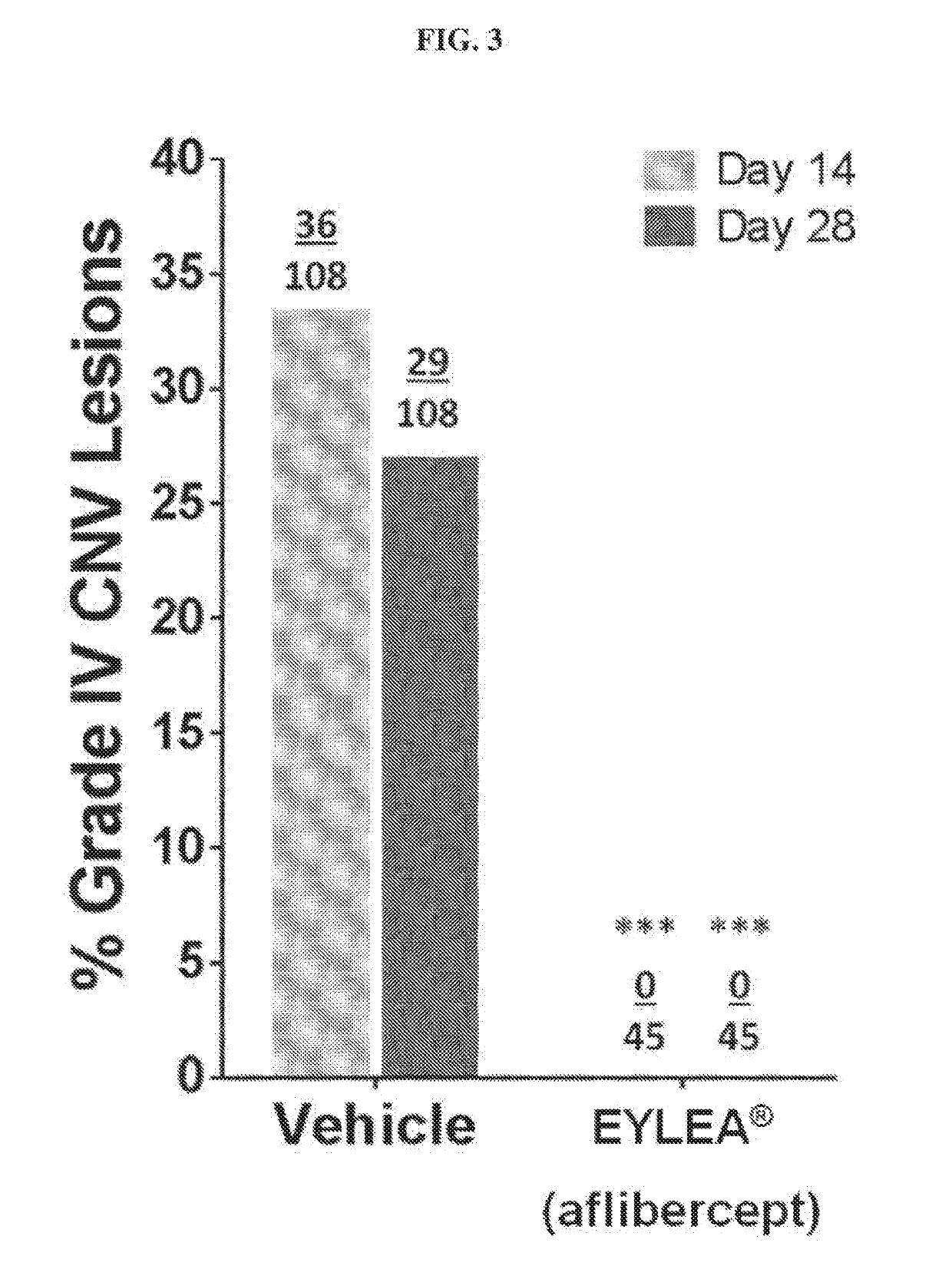Treatment of AMD using aav2 variant with aflibercept
a treatment method and amd technology, applied in the field of amd treatment using aav2 variant with aflibercept, can solve the problems of eye disease or condition, infection, and other adverse effects in some patients, and achieve the effects of improving patient outcomes, improving treatment options, and increasing the risks of inflammation and infection
- Summary
- Abstract
- Description
- Claims
- Application Information
AI Technical Summary
Benefits of technology
Problems solved by technology
Method used
Image
Examples
example 1
Evaluation of rAAV2.7m8-Aflibercept in Monkeys
[0145]It has been postulated that delivery of a therapeutic transgene (or payload) into target cells or tissue via gene therapy is largely dependent on AAV capsid proteins and their role in targeting the AAV virus to relevant or target cells in a primate or human subject. It has also been reported that the 7m8 variant shows increased infectivity or targeting of retinal cells when injected intravitreally. Thus, one would expect the 7m8 variant to work similarly in targeting various therapeutic transgenes to retinal cells when injected intravitreally.
[0146]Objective:
[0147]To assess the efficacy of a rAAV2.7m8 comprising a nucleic acid sequence that encodes aflibercept with that of a rAAV2.7m8 comprising a nucleic acid sequence that encodes sVEGFR-1 following intravitreal (IVT) administration of each gene therapy at a dose of 2×1012 vg to inhibit the development of choroidal neovascularization (CNV) induced by laser photocoagulation in Afri...
PUM
| Property | Measurement | Unit |
|---|---|---|
| volume | aaaaa | aaaaa |
| volume | aaaaa | aaaaa |
| volume | aaaaa | aaaaa |
Abstract
Description
Claims
Application Information
 Login to View More
Login to View More - R&D
- Intellectual Property
- Life Sciences
- Materials
- Tech Scout
- Unparalleled Data Quality
- Higher Quality Content
- 60% Fewer Hallucinations
Browse by: Latest US Patents, China's latest patents, Technical Efficacy Thesaurus, Application Domain, Technology Topic, Popular Technical Reports.
© 2025 PatSnap. All rights reserved.Legal|Privacy policy|Modern Slavery Act Transparency Statement|Sitemap|About US| Contact US: help@patsnap.com



